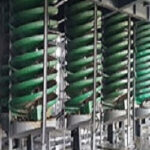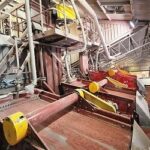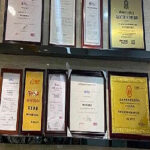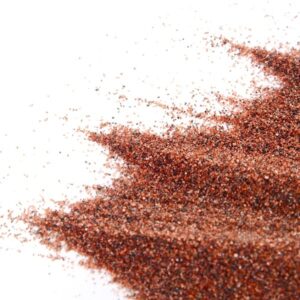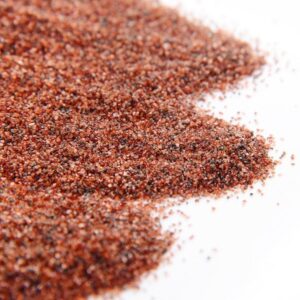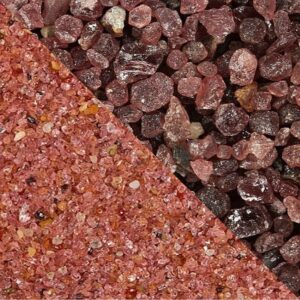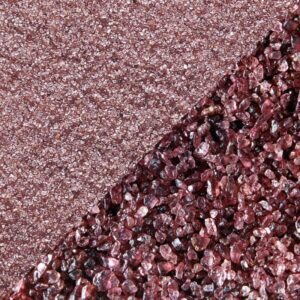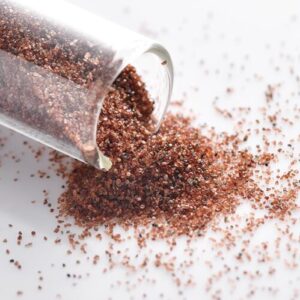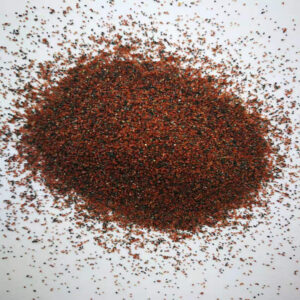Abrasives make up one of the most important components in the waterjet cutting process. While a pure waterjet (without abrasives) can cut softer materials like foam and rubber, adding an abrasive substance enhances the jet’s cutting capability-to the point where you can cut glass, steel, and a variety of other components. As you might imagine, the type of abrasive used is extremely important in determining the machining outcome.
Professionals have tested various synthetic and natural materials for use in waterjet cutting, and the prominent choice for the industry is garnet. A garnet abrasive offers a reliable and rigid substance that forms sharp edges when fractured-providing superior cutting ability. Garnet offers the correct combination of durability, density, and particle shape to maximize the cutting capabilities of most common waterjets. On top of that, garnet is also mostly chemically inert-meaning it won’t react poorly with materials you’re cutting.
The Best Option for the Best Price
Although it’s possible to synthetically create garnet, for the purpose of waterjet cutting, the substance is found naturally in the earth; extracted from underground mines, and seashore locations. In its ideal form, the mineral looks similar to a ruby-although it’s much less costly. Processing the mineral for use in waterjet fabrication may include crushing it to a specific size, washing it, or simply screening it for a specific “mesh.”
On the MOHS scale-often used to determine the hardness and durability of minerals-diamond earns a level of 10 (the hardest substance known), while garnet usually falls around the 7.5 to 8.5 range. Though there are stronger minerals available, garnet generally offers the best level of hardness, for the most reasonable price.
As an abrasive substance, here’s what garnet has to offer:
Significant hardness. Garnet can generally last a long time before needing to be replaced, making it a cost-effective abrasive.
Options for recycling. In some cases, garnet can be recycled, depending on your chosen grit size.
Environmentally friendly cutting and cleaning. Garnet is frequently used in blast cleaning next to bodies of water, thanks to its lack of chemical input.
Choosing the Correct Garnet
Not all garnet is equal when it comes to cutting. Some garnet solutions are far more productive than others-even though each mineral offers a similar chemical makeup.
On average, abrasive accounts for about 70% of the operating costs associated with waterjet machining. As such, the garnet you choose for any particular project will have a significant impact on the success, and economic impact, of your operations.
Garnet comes in a range of grit sizes, designed to provide different results; such as a smooth or rough finish, depending on the hardness of the machining material. In most circumstances, companies need to use finer grits for processes that demand higher edge quality, while larger grits are most effective in projects that require faster cutting.
Most of the time, when companies purchase garnet for waterjet machining, they receive the substance in a sand-type form, after it’s been run through a screen to obtain the exact sizing required. Garnets come in a range of “mesh” sizes, and companies generally choose a mesh size based on the material they’re cutting. Mesh sizes generally range from between 50 to 200, indicating the size of the garnet abrasive in “microns.”
Most fabricators that process a wide range of materials choose garnet mesh sizes that work on both thick and thin materials-typically 80 mesh. Specialist organizations that cut thicker materials (like granite or steel) might select a coarser 60 mesh, while companies that cut plastic or aluminum might stick to 120 mesh.
Using Garnet for Abrasive Waterjet Cutting
Standing fairly close to diamond on the hardness scale, and more affordable than similar minerals, garnet stands out as the top choice for most abrasive waterjet projects. Some garnet is better for cutting than others depending on its shape, hardness, sharpness, and purity; yet across the board, its durability, sharp edges, and low chemical input make it ideal for working with almost any material. Although other abrasives are available in certain circumstances, most organizations agree that garnet offers the best results, for the best price.
 Henan Sicheng Abrasives Tech Co., Ltd was established in 2009 and is an integrate garnet mining, processing shipping ,global marketing and distribution organisation providing the high quality indusrtrial garnet for the surface preparation, waterjet cutting , water filtration and polishing industries.
Henan Sicheng Abrasives Tech Co., Ltd was established in 2009 and is an integrate garnet mining, processing shipping ,global marketing and distribution organisation providing the high quality indusrtrial garnet for the surface preparation, waterjet cutting , water filtration and polishing industries. 